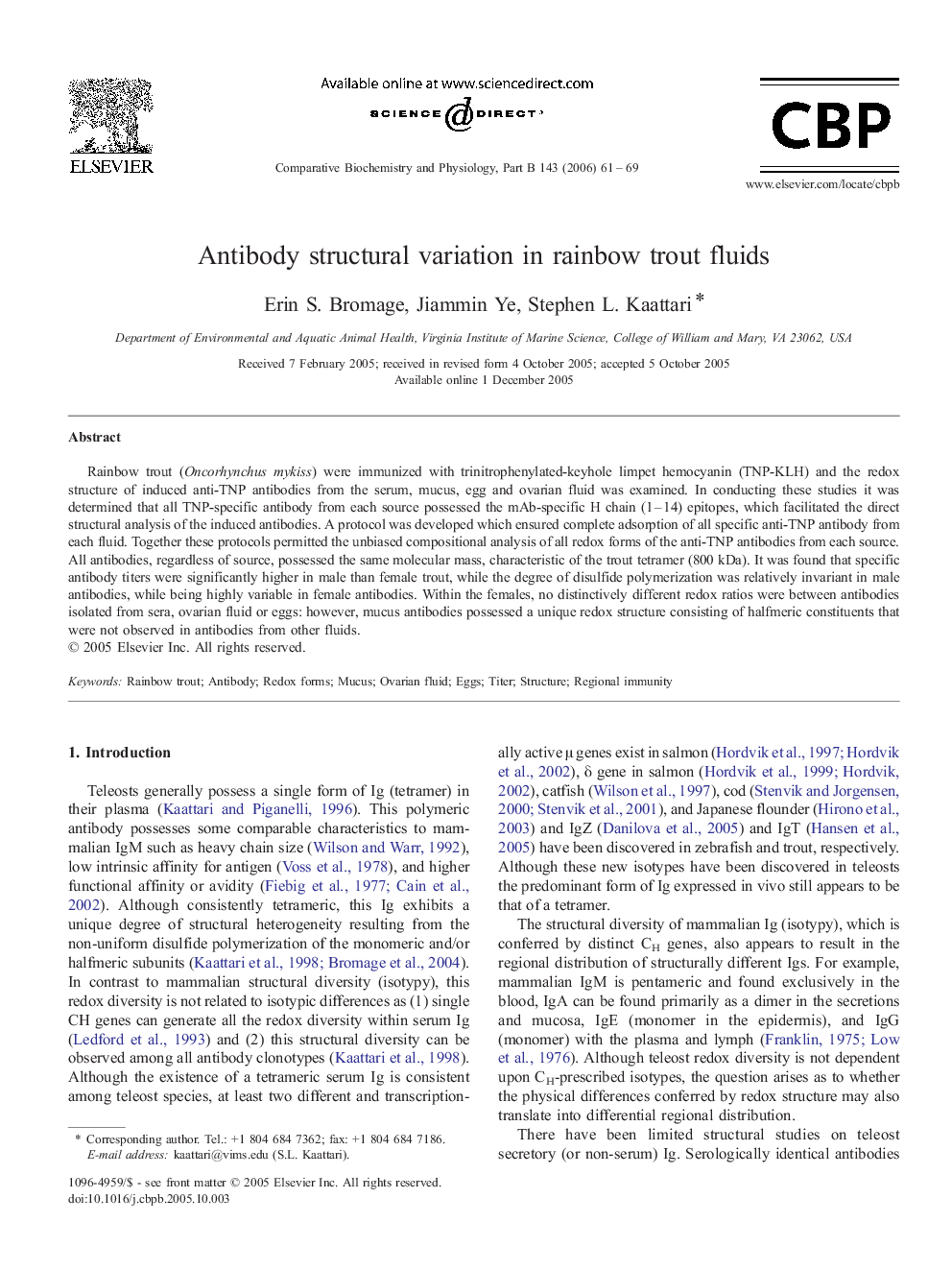| Article ID | Journal | Published Year | Pages | File Type |
|---|---|---|---|---|
| 1976444 | Comparative Biochemistry and Physiology Part B: Biochemistry and Molecular Biology | 2006 | 9 Pages |
Rainbow trout (Oncorhynchus mykiss) were immunized with trinitrophenylated-keyhole limpet hemocyanin (TNP-KLH) and the redox structure of induced anti-TNP antibodies from the serum, mucus, egg and ovarian fluid was examined. In conducting these studies it was determined that all TNP-specific antibody from each source possessed the mAb-specific H chain (1–14) epitopes, which facilitated the direct structural analysis of the induced antibodies. A protocol was developed which ensured complete adsorption of all specific anti-TNP antibody from each fluid. Together these protocols permitted the unbiased compositional analysis of all redox forms of the anti-TNP antibodies from each source. All antibodies, regardless of source, possessed the same molecular mass, characteristic of the trout tetramer (800 kDa). It was found that specific antibody titers were significantly higher in male than female trout, while the degree of disulfide polymerization was relatively invariant in male antibodies, while being highly variable in female antibodies. Within the females, no distinctively different redox ratios were between antibodies isolated from sera, ovarian fluid or eggs: however, mucus antibodies possessed a unique redox structure consisting of halfmeric constituents that were not observed in antibodies from other fluids.
